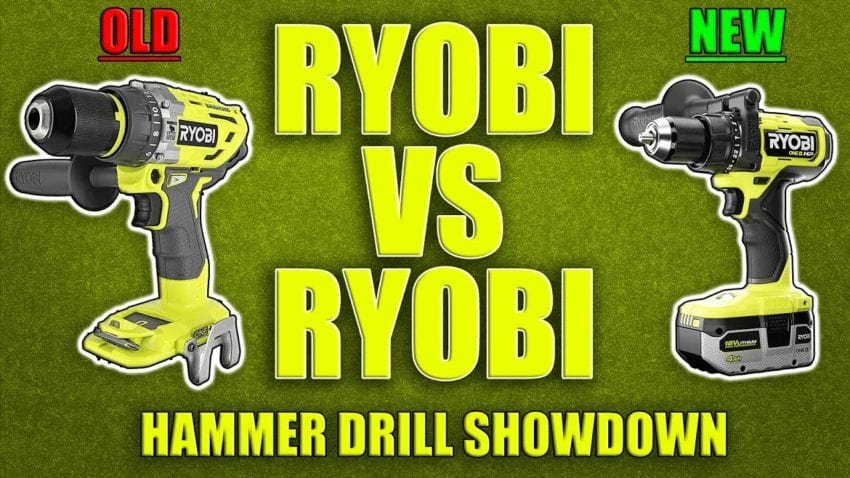
At first glance, there doesn’t seem to be a ton of difference between Ryobi’s P251 brushless hammer drill and the new PBLHM101 HP brushless model. Well, other than the fact that the modeling number system isn’t as simple. A closer look reveals some differences between the two though. Wondering if it’s worth it to upgrade to the newest Ryobi HP Brushless Hammer Drill? We run the two head-to-head on the PTR Test Track, revealing all the aspects of torque, speed, and power in a variety of drill testing!
Buy Here
Full Transcript
Ryobi has been coming out fast and furious with their new HP and HP Compact brushless tools to replace the previous generation. But is it worth making the upgrade? We brought in the two flagship hammer drills to find out!
Thanks for clicking on our video—we hope you enjoy it! While you’re here, consider subscribing to our channel and give us a thumbs up if you like what you see. When you’re finished with this video, check out how Ryobi did against Skil and Craftsman!
At first glance, there doesn’t seem to be a ton of difference between Ryobi’s P251 brushless hammer drill and the new PBLHM101 HP brushless model. Well, other than the fact that the model numbering system isn’t as easy.
A closer look reveals some differences, though. The HP hammer drill is about 1/2 an inch shorter and it weighs a couple of ounces less.
The location of the auxiliary handle design makes a change for the better. It moves from below the trigger to clamp a bit more securely behind the chuck. We also see a slight difference in the LED design—though it’s still mounted on the foot. The new model also drops the magnetic plate and bit holder.
On top of the housing, the 2-speed gearbox switch is still in the same place. The only major difference here is that you now use the clutch collar to change between drill, driver, and hammer drill modes.
Ergonomically, the handle is pretty much the same shape but with a darker overmold color.
If that were all they did, it’s probably not enough to pass on your P251 and make the upgrade to HP. Personally, if we’re going to upgrade to a new tool, it’s typically going to be because of a performance boost.
With that said—on paper, both hammer drills have the same 750 in-lbs of torque. There is a big difference in speed, however. Low gear moves from 410 RPM to 500, and high raises the top speed by 300 RPM—from 1800 to 2100. The hammer blow rate is significantly higher as well—jumping from 24,000 beats per minute to 31,000.
To see what that means practically, we ran both hammer drills on the PTR Test Track.
Unsurprisingly, there’s more than enough top-end speed for the drywall screws and we had to feather the trigger for the sake of control. That top gear held steady through the twist bit and auger bit sections, too.
We had to drop into low gear for the spade bits and that’s something most of the bigger drills we test can handle in high. For our 1” hole saw, we were back into high, though, and finished off the track in low gear like most of the drills we’ve tested.
Using the 4.0Ah battery that came in the kit, the P251 finished the track in 4 minutes, 35 seconds. That’s the slowest of the heavy-duty drills we’ve tested, and in with the compact models, and the exact same time as the HP Compact drill.
The HP Brushless started off a little faster in each of the first three sections but gained a massive advantage by staying at high speed with the spade bit. It wrapped things up by boring nearly three times faster with the 1” hole saw and twice as fast with the 2-1/8“.
By comparison, the HP Brushless torched its time trial, finishing in 2 minutes, 37 seconds. And that was with a 2Ah HP+ battery. Switching to a 4Ah battery, it dropped even more time, finishing in 2 minutes, 26 seconds.
Clearly, there’s a big performance difference with the HP upgrade. But the Test Track didn’t include a concrete component, so we took both hammer drills out to our 4000 PSI concrete test slab. Using a 1/4“ concrete bit, the P251 needed 8.12 seconds to make a 3-inch deep hole. The HP brushless needed just 5.41 seconds.
Just for kicks, we tried the same test with a 1/2-inch concrete bit as well. This time, the P251 took 12.55 seconds and the HP needed almost 4 seconds less at 8.56 seconds.
From some minor design tweaks and a more compact frame to significantly faster performance, it’s worth making the upgrade to Ryobi’s HP brushless hammer drill. That goes double if you’re using it to earn a living.
It runs $119 as a bare tool or $179 with a 4.0Ah High-Performance battery and charger at The Home Depot. You can also get it as part of a combo kit with the HP brushless impact driver for $229. No matter how you get it—we think it’s a good value.
If you have any questions or feedback for us, feel free to let us know in the comments below, and, as always, thanks for watching!






